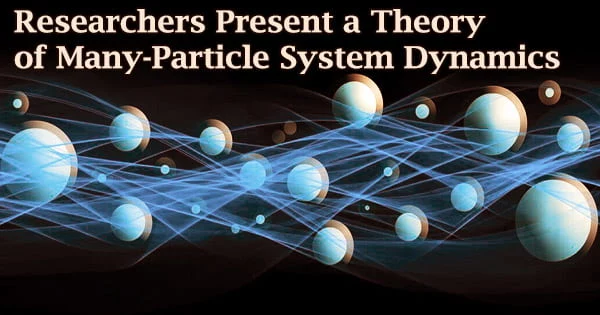Physicists at Bayreuth University are among the world’s leading experts on power functional theory. For the first time, this novel method allows researchers to precisely explain the dynamics of many-particle systems throughout time.
Atoms, molecules, and bigger particles that are invisible to humans are examples of particles. The new theory broadens the scope of the standard density functional theory, which is limited to many-particle systems in thermal equilibrium.
A research team led by Prof. Dr. Matthias Schmidt presents the main aspects of the theory, which was extensively refined and elaborated in Bayreuth, in Reviews of Modern Physics.
When the temperature in a many-particle system is balanced and no heat flows, it is said to be in thermal equilibrium. This does not imply that the system is in a state of strict rest.
A lottery draw machine, which rotates at a consistent pace, can be comparable to several many-particle systems. The balls have a lot of freedom of movement and hop around in an unorganized manner.
The particles in a fluid many-particle system are packed much more tightly than in a drum, which is why they constantly collide at small distances and time intervals.
The density functional theory may thoroughly and precisely describe the essential features of such systems if the system is in thermal equilibrium.
When the uniform rotation slows down and the chamber reverses in the lottery draw machine, this equilibrium is lost. The winning numbers are then rolled onto a rail within the chamber and ultimately ejected.
For example, our joint efforts have resulted in power functional theory, which extends density functional theory to time-dependent processes.
Dr. Matthias Schmidt
The power functional theory is required to accurately and without gaps record such processes: it puts the winners’ luck into the language of physics.
The classical density functional theory is an extremely detailed and aesthetically pleasing theory. It can explain and relate the often complicated processes that occur in a system during thermal equilibrium.
Phase transitions, crystallization, and phenomena like hydrophobicity, which occurs when surfaces or particles avoid contact with water, are examples of these processes. Such processes are frequently of tremendous technological or biological importance.
For the past ten years, we have been looking for ways to make many-particle systems in thermal disequilibrium accessible to an equally precise and elegant physical description in Bayreuth, thanks to the elegance and power of density functional theory. Important works from research partners at the University of Fribourg in Switzerland have contributed to this quest.
“For example, our joint efforts have resulted in power functional theory, which extends density functional theory to time-dependent processes,” reports Prof. Dr. Matthias Schmidt, who holds a chair in theoretical physics at the University of Bayreuth.
The recently released exposition of power functional theory (PFT) integrates research from two main concentration areas at the University of Bayreuth: nonlinear dynamics and polymer and colloid science.
Many of these works have received significant assistance and funding from the University of Bayreuth’s Research Centre for Scientific Computing. The power functional theory, which was first proposed in 2013, was put to the test, expanded further, and applied to real-world physical situations.
The research looked at active particles that can self-propel, shear and flow phenomena in colloids and liquids, and the microscopic structure of liquids, among other things.
The fact that the forces working in many-body systems and their correlations with observable events could be clearly deduced in this way was a critical aspect in the PFT’s development. Computer simulation methodologies and statistical mechanics applications were frequently used in this situation.





